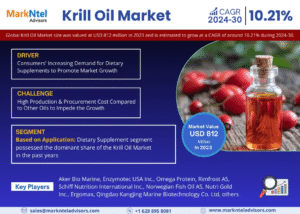A fundraiser website helps people collect money online. It can be used for many reasons. You might need help paying medical bills. Or you’re raising money for a school trip, a charity, or your local sports team. Whatever your reason, these websites make it easy for others to give.
You don’t need tech skills. You don’t need a big budget. You just need a story and a goal.
Why People Use Fundraiser Websites
Asking for money in person is hard. Online, it’s easier. You can share your page with one link. You can post it on social media, in messages, and in emails. People can donate with a few clicks.
These websites also help you explain your need. You can write your story, add pictures, and tell people exactly what the money is for. It’s all in one place.
Most fundraiser websites also show how much you’ve raised. That way, others can see your progress. It makes it more real. More trustworthy.
Who Can Use a Fundraiser Website
Anyone can start a fundraiser. Some common examples:
- Someone raising money for surgery or treatment
- A teacher collecting for classroom supplies
- A charity launching a donation campaign
- Parents trying to cover school fees
- A small business needing help after a fire or flood
- A friend group supporting someone in crisis
It doesn’t have to be a big project. Many fundraisers ask for just a few hundred euros. Others raise thousands.
You don’t need to be a nonprofit. You don’t need a registered foundation. You just need a reason people care about.
What Makes a Good Fundraiser Website
Some fundraiser pages get more attention than others. Why? A few things matter.
Clear Title
Don’t make people guess. Use a short title that says exactly what the fundraiser is for. Example: “Help Maria Get Her Cancer Treatment” is better than “Support Our Journey.”
Honest Story
People want to know what’s going on. Be direct. Say what happened. Say how much you need and why. If you’re asking for help, don’t hold back. Be open.
Real Photos
Photos help. They show you’re a real person. They make the story personal. Use pictures that match your story.
Specific Goal
Say how the money will be used. Don’t just say “support me.” Say “I need 2000 euro to pay hospital bills from my surgery.” It builds trust.
Regular Updates
If you get a donation, say thank you. If something changes, update the page. Tell people how you’re doing. People who gave once might give again. Or share the page with others.
Features to Look for in a Fundraiser Website
Not all platforms are the same. Some take big fees. Others are hard to use. Here’s what to check before you start:
Easy Setup
You should be able to create your fundraiser in minutes. No coding. No forms.
Secure Payments
Make sure the website is safe. People should be able to donate by card or PayPal without problems.
No High Fees
Most platforms take a small cut from donations. That’s normal. But avoid sites that charge a big upfront fee or monthly cost. It’s better if people can donate without you losing a big share.
Works on Phones
People check links on their phones. Your fundraiser page should work well on mobile too.
Language Options
If you’re fundraising in Europe or with international donors, a platform that supports many languages helps.
Customer Support
Sometimes things go wrong. A good support team can fix issues quickly.
How to Start Your Fundraiser
Starting is simple. You don’t need a plan. Just follow a few basic steps.
1. Pick a Fundraiser Website
Choose one that suits your need. For example, WhyDonate is popular in Europe and supports both personal and nonprofit fundraisers.
2. Make an Account
Sign up with your email or social media. It takes a few minutes.
3. Set a Goal
Think about how much you need. Be realistic. Break it down if needed. Explain your goal clearly on the page.
4. Write Your Story
Use simple words. Speak from the heart. Say what happened. Say why you’re asking for help now.
Example:
“My dad had a stroke and can’t work. We’re raising 5000 euro to pay rent and bills for the next three months.”
Keep it short. One or two paragraphs are enough.
5. Add Photos or Videos
Use a picture of the person or place you’re fundraising for. If you have a short video, even better.
6. Share It
Post the link on your social media. Send it to friends. Ask them to pass it on. Most donations come from people close to you. But their friends might help too.
7. Keep Posting
Update the page every week or so. Let people know how things are going. Say thank you often.
How to Get More Donations
Fundraisers that do well have one thing in common. They get shared. Here’s how to reach more people.
Post Regularly
Remind people that your fundraiser is still going. Post once a week with updates or thank-you notes.
Use WhatsApp and Messenger
Many people check these more than social media. Send your fundraiser link to friends directly.
Ask Others to Share
Don’t just ask for money. Ask people to forward the link to others. Some will help just by spreading the word.
Pin the Post
On Facebook or Twitter, you can pin your fundraiser link to the top of your profile. It stays visible.
Use Email
Write a short message and email it to family, coworkers, or your community group.
Talk About It
Mention your fundraiser in conversation. It’s okay to say, “I’m raising money for this — I’ll send you the link.”
Fundraising for a Group
Some fundraisers are for teams or causes, not just individuals. That works too.
You can raise money for:
- Sports teams
- School clubs
- Local charities
- Community events
Use the same approach. Tell the group story. Add a few team photos. Break down how the money will be used.
Example:
“We’re collecting 2500 euro to buy equipment and cover transport for our under-15 football team.”
Make sure one person handles the account and updates the page.
Things to Avoid
Don’t lie or exaggerate. If people find out, they stop trusting the platform and other fundraisers too.
Don’t ask without explaining. A blank fundraiser with no info will raise nothing.
Don’t forget to say thank you. Even a short “Thanks so much, this helps a lot” means something.
Don’t go quiet. If you stop posting, people think the need is over.
Why a Fundraiser Website Works Better Than Offline
Online fundraising is quick. It reaches more people. It gives them a safe way to help.
Offline fundraising still works. But it takes more time and effort. You need to plan events, collect cash, and track everything by hand.
A fundraiser website handles all that for you. You set it up once and keep sharing the link. The platform shows your goal, your progress, and who’s donated (if they choose to show their name).
Ending a Fundraiser
You don’t have to keep it going forever. When you reach your goal, or when the situation changes, you can close the fundraiser.
Most websites let you withdraw the funds to your bank or PayPal. That usually takes a few days.
Let your donors know when the fundraiser is done. Post a thank-you message. Say what the money helped with. That makes people more likely to give again in the future — to you or others.
Final Thoughts
Fundraiser websites work. They help real people raise real money. Whether it’s a small personal need or a big group cause, you don’t need to be an expert. Just be honest. Be clear. Share your story and keep people updated.
The hardest part is getting started. Once your fundraiser is live, each share helps more than you think.
If you’re looking for a place to begin, try a platform like WhyDonate. It’s simple, secure, and works well across Europe. You can raise funds for medical bills, education, community projects, or anything that matters to you.
Ready to start? Set your goal, write your story, and share your link.





